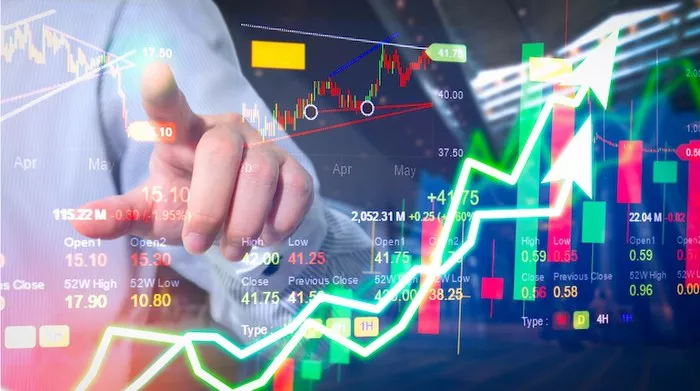Investing in commodities can be an exciting and potentially lucrative venture, and beef futures provide a unique opportunity to participate in the livestock market. If you’re interested in buying beef futures, it’s essential to understand the basics of how this market works, the factors influencing prices, and the steps involved in making a purchase. In this article, we’ll guide you through the process of buying beef futures, helping you navigate this specialized investment avenue.
Understanding Beef Futures
Beef futures are financial contracts that allow investors to speculate on the future price of beef. These contracts represent an agreement to buy or sell a specific quantity of beef at a predetermined price on a future date. They are traded on commodity exchanges, such as the Chicago Mercantile Exchange (CME), and provide market participants with an avenue to profit from price fluctuations in the beef market without physically owning the commodity.
Purpose of Beef Futures
The primary purpose of beef futures is to provide a hedging mechanism for participants in the beef industry, such as ranchers, meat processors, and distributors. These stakeholders can use futures contracts to manage their exposure to price volatility by locking in future prices for their beef products. On the other hand, individual investors and speculators can also participate in beef futures to potentially profit from price movements and diversify their investment portfolios.
Factors Affecting Beef Futures Prices
Before diving into purchasing beef futures, it’s crucial to understand the factors that influence their prices. Several key factors can impact beef futures prices:
-
Supply and Demand Dynamics
The balance between beef supply and demand is a significant driver of futures prices. Factors such as herd size, weather conditions affecting feed availability, and consumer preferences can influence the overall supply and demand dynamics in the beef market.
-
Cattle Inventory and Production Levels
The number of cattle available for slaughter and the production levels of beef products can impact futures prices. Changes in inventory and production can influence market expectations and subsequently affect prices.
-
Grain and Feed Prices
The cost of grains and feed used in livestock production, such as corn and soybeans, can impact beef futures prices. Fluctuations in feed prices can affect production costs and, in turn, influence the supply and pricing of beef.
-
Economic Factors
Economic conditions, including GDP growth, consumer spending, and inflation, can impact beef consumption and prices. Strong economic growth and higher consumer spending may increase demand for beef, potentially driving up futures prices.
-
Trade Policies and Export Demand
Trade policies and global demand for beef can affect futures prices, especially in countries with significant beef exports or imports. Changes in trade agreements, tariffs, or disease outbreaks can impact export demand and subsequently influence prices.
-
Weather and Natural Disasters
Adverse weather conditions, such as droughts or severe storms, can impact cattle production and feed availability, leading to potential price fluctuations in beef futures.
Understanding these factors can help you make more informed investment decisions when buying beef futures.
Steps to Buy Beef Futures
Now that you have a grasp of the fundamentals, let’s walk through the steps involved in buying beef futures:
-
Research and Education
Begin by familiarizing yourself with the commodity futures market, specifically beef futures. Study market trends, historical price movements, and factors impacting the beef industry. Consider consulting reputable sources, financial publications, and seeking guidance from experienced professionals.
-
Choose a Broker
To trade beef futures, you’ll need to open an account with a registered commodity futures broker. Select a broker that provides access to the specific commodity exchanges where beef futures are traded. Evaluate their trading platform, fees, customer service, and any educational resources they offer.
-
Account Setup and Funding
Complete the necessary paperwork and provide the required documentation to open a futures trading account with your chosen broker. Once your account is approved, fund it with the necessary capital to trade beef futures.
-
Develop a Trading Strategy
Before placing trades, develop a well-defined trading strategy. Determine your risk tolerance, investment goals, and preferred trading approach. Consider using technical and fundamental analysis techniques to identify potential entry and exit points.
-
Placing an Order
Once your account is funded and your strategy is in place, you’re ready to place an order to buy beef futures. Access your broker’s trading platform, select the appropriate beef futures contract, and enter the details of your order, including quantity and order type (e.g., market order or limit order).
-
Monitor and Manage Your Position
After placing your order, actively monitor the market and manage your position. Stay informed about relevant news, reports, and market developments that may impact beef prices. Adjust your strategy if necessary, and consider setting stop-loss orders to manage potential losses.
-
Close or Roll Your Position
As the futures contract’s expiration date approaches, you have two options: closing your position or rolling it over. Closing the position involves selling the contract before it expires, while rolling it over involves offsetting the current contract by simultaneously entering into a new contract with a later expiration date.
It’s important to note that buying beef futures involves inherent risks, including the potential for substantial financial losses. Make sure to thoroughly understand these risks and only invest capital that you can afford to lose.
Conclusion
Investing in beef futures can be an intriguing opportunity for those interested in the commodities market and seeking exposure to the livestock industry. By understanding the fundamentals of beef futures, the factors affecting their prices, and the steps involved in purchasing these contracts, you can make more informed investment decisions. Remember to conduct thorough research, develop a robust trading strategy, and exercise prudent risk management to navigate the complexities of this specialized market.


